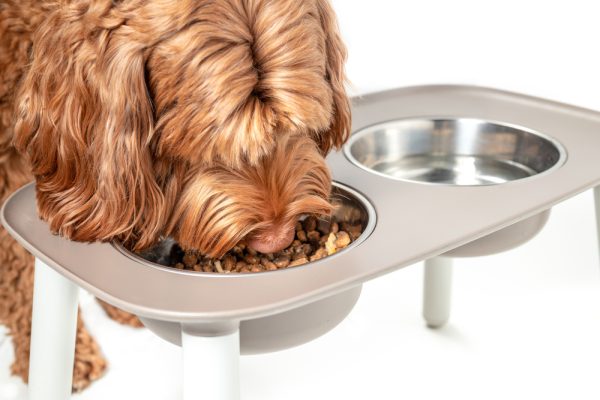In this article
It is always tempting to look for home remedies that might help with various medical conditions in our pets, as the natural inclination is to help our pets in any way we can when they get sick.
Pancreatitis is a disease that is commonly seen in dogs, and can be debilitating in more severe forms. Think of pancreatitis as a severe and sometimes life-threatening form of GI upset, often accompanied by vomiting, diarrhea, anorexia, and abdominal pain.
One treatment option you may have run across for dogs with pancreatitis is slippery elm, a native North American plant that has been used for its medicinal properties for decades. Its inherent qualities are ascribed to being helpful in a variety of GI conditions in people, but does that translate for dogs with pancreatitis? Slippery elm for pancreatitis in dogs has not been researched, and therefore, it should not be used without strict instructions from your vet. In many instances, there are far more effective medications that your vet can prescribe to help with pancreatitis.
Read on to learn more about slippery elm and pancreatitis in dogs.

What is Slippery Elm?
Slippery elm is a tree found in North America that has purported medicinal properties. For this reason, it has been used for various ailments in people for decades. The inner tree bark is generally what is used in herbal remedies, to make various different forms of both dried and powdered supplements.
In humans, it has been reportedly used for the following conditions—though little scientific research has been done to support these uses:
- GI upset
- GI reflux
- IBS
- Ulcerative Colitis
- Crohn’s disease
- Diarrhea
- Skin wounds

What is Pancreatitis?
Pancreatitis is inflammation within the pancreas (though it may spread to surrounding abdominal tissues and organs, as well). The pancreas is found adjacent to the stomach and small intestine, and serves important functions in producing digestive enzymes that break down fats, carbohydrates, and proteins, as well as hormones that regulate blood sugar.
When inflammation occurs in the pancreas, all of these functions can be impaired, and worse, some of the digestive enzymes can leak into surrounding tissues, enhancing the local inflammation. This can lead to further clinical signs, such as diarrhea, anorexia, lethargy, abdominal pain, vomiting, and blood in the stool.
If you suspect your dog is suffering from pancreatitis, are concerned for their wellbeing, or simply want more information on their health, you should contact your vet directly for an assessment. They can provide you with more information and a care plan.
If you need to speak with a vet but can't get to one, head over to PangoVet. It's our online service where you can talk to a vet online and get the advice you need for your pet — all at an affordable price!

What Are Potential Signs That a Dog Has Pancreatitis?
- Weakness
- Lethargy
- Nausea
- Vomiting
- Diarrhea
- Loss of appetite
Why is Slippery Elm a Suggested Home Remedy for Dogs with Pancreatitis?
Slippery elm reportedly has qualities that minimize GI inflammation, which may be why it has been suggested as a possible home remedy for dogs with pancreatitis. It is believed to enhance mucus secretion, as slippery elm itself is very mucusy when mixed with liquid. As many of cells that line the GI tract secrete mucus, it is believed that enhanced mucus production may help to line the inner surface of the intestines, and therefore, act as a physical protectant from inflammation.
However, no research in dogs exists to support these theories. Further, some individuals may be allergic to slippery elm.
What Are Potential Side Effects of Slippery Elm?
As mentioned, some dogs may be allergic to the supplement. Further, no data exists to suggest it is safe for sick, pregnant, or nursing dogs. Further, it has been suggested that slippery elm may decrease the effectiveness of other medications, by decreasing their absorption if given around the same time as the other medications.
What Are Other Treatments to Keep a Dog with Pancreatitis Safe?
Other treatments are likely to be far more effective for a dog with pancreatitis. These are often prescribed by your dog’s vet, and may include:
- IV fluids
- IV or nasogastric nutritional supplements
- Anti-inflammatories
- Anti-nausea medications
- Anti-diarrheal medications
- Pain relieving medications
- Injectable vitamin supplements

Conclusion
Using at-home remedies for sick pets may sound appealing, as we want to do anything within our power to help our pets. However, using remedies in sick pets, especially remedies that lack scientific evidence, has the potential to worsen the disease process. Further, far more effective treatments can be prescribed by your dog’s vet to help treat pancreatitis. Thus, enlisting their help and sticking to the prescribed routines are far more likely to get your pup feeling better as quickly as possible.
Featured Image Credit: ManeeshUpadhyay, Shutterstock


















